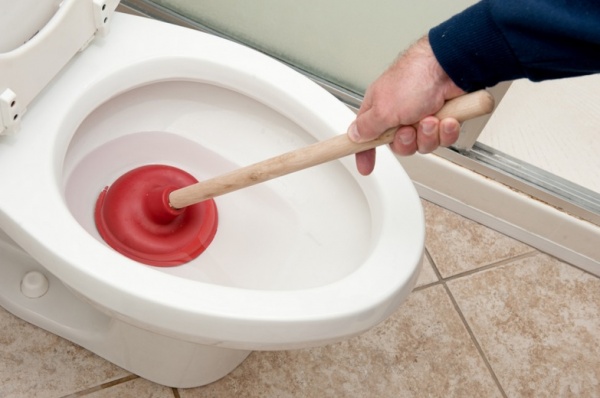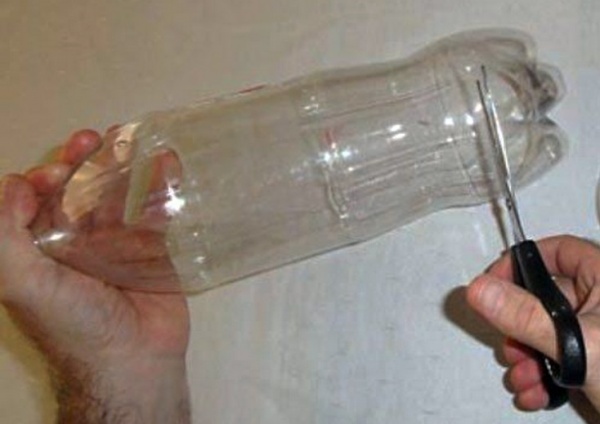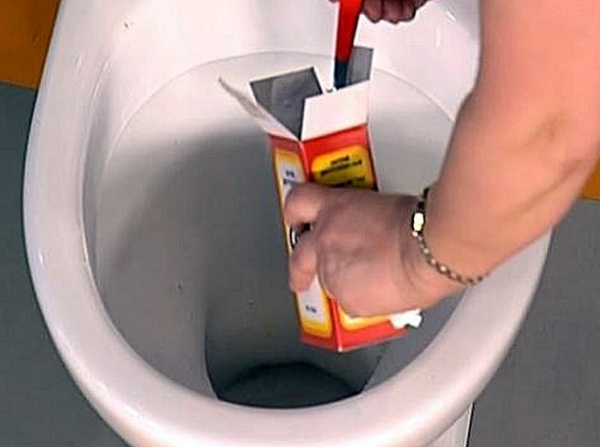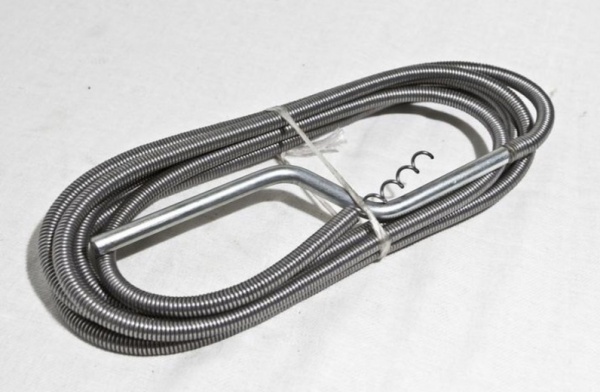A clogged drain in an apartment is an unpleasant problem, but when the toilet becomes clogged, it is doubly inconvenient, since the task requires an immediate solution. Salt deposits in the pipes often cause difficulty in draining the toilet. This is due to hard water, urea, or some other kind of sediment deposited on the walls of the pipes and narrowing their inner diameter.
Salt deposits in the pipe. The "aesthetics of the frame" is accompanied by a corresponding smell
Advice! To find out the localization of the blockage, open the taps in the bathroom and in the kitchen (water sources in the common drain). If here the water goes into the drain freely, then the reason is in the toilet. If its discharge is slowed down everywhere, then the problem is in the common pipe. In this case, call the plumbers - it will be difficult to cope with the trouble on your own.
Attention! If you find a blockage in the toilet, do not empty the cistern, as its minimum volume is 3 liters. For reliability, you can turn off the water supply tap so that it does not flow to the floor when the drain is clogged. Use a bucket, pouring no more than 1 liter of liquid into the toilet for testing.

Cleaning risers, especially in old houses, is a job for professionals
Important. Prevention of salt formations allows you not to spend further effort on cleaning the pipes. It is enough to fill all the plums in the apartment with a special cleaning liquid once every 3 months at night.
However, the main reason for blockages in toilets is the residents themselves, who use the plumbing fixture as a garbage chute. And if a meat bone accidentally got into the toilet is easy to remove, then a rag or paper blockage will require some effort.
Tips for clearing the blockage:
- When replacing sewer pipes, install new ones of the same diameter, no less.
- When making repairs in the toilet, close the toilet to prevent debris from getting into it.
- Don't be lazy to throw away trash (pads, newspapers, cat litter, etc.) in the designated areas. So you will save your time, and you will not blush in front of the plumber.
How to unclog a toilet bowl yourself
There are several ways to unclog toilet blockages. Their effectiveness depends on the complexity of the cork: material, volume, time of occurrence.
Advice! Before attempting to unclog the blockage, remove the water from the toilet to the level of the drain. A rag, sponge, or rubber bulb (enema) is suitable for this.
Mechanical methods to remove toilet blockage

Important. The diameter of the plunger tip must be larger than the diameter of the toilet bowl drain. This is the only way to create conditions for the occurrence of a water hammer.

This simple plumbing tool will help you remove a small blockage in the toilet.
If the apartment does not have a plunger, then you can use plastic bottle, the bottom of which is cut off, and the lid is tightly twisted:
- the resulting device is gradually introduced into the opening of the toilet until the air in the bottle begins to push it back;
- with a sharp movement, the bottle is pressed against the stop into the drain and immediately pulled out.
The generated pressure is powerful enough to break through the debris plug with two or three manipulations.

Plastic bottle + laws of hydraulics = homemade plunger
If the above methods did not help to fix the problem, then you can use household chemicals.
Clogging chemicals

Attention! If the connecting corrugation between the toilet bowl and the pipe is made of thin plastic, then it can burst under the influence of boiling water. In this case, use warm water.

Attention! Before you decide to act drastically, pouring a solution of formic, hydrochloric or sulfuric acid into the toilet bowl, think about whether the agent will corrode the old pipes at the same time.
Professional plumbing cable
This is a special plumbing tool, which is a cable with a handle at one end and a nozzle at the other. There are many types of ropes (rope, spring, rigging, tension, etc.) with a diameter of 6 to 16 mm and a length of up to 60 meters.

For residential needs, a 5-meter Ø9 mm cable is enough. The nozzle at its end can be in the form of a weight (for punching) or a spiral (for removing a blockage)



